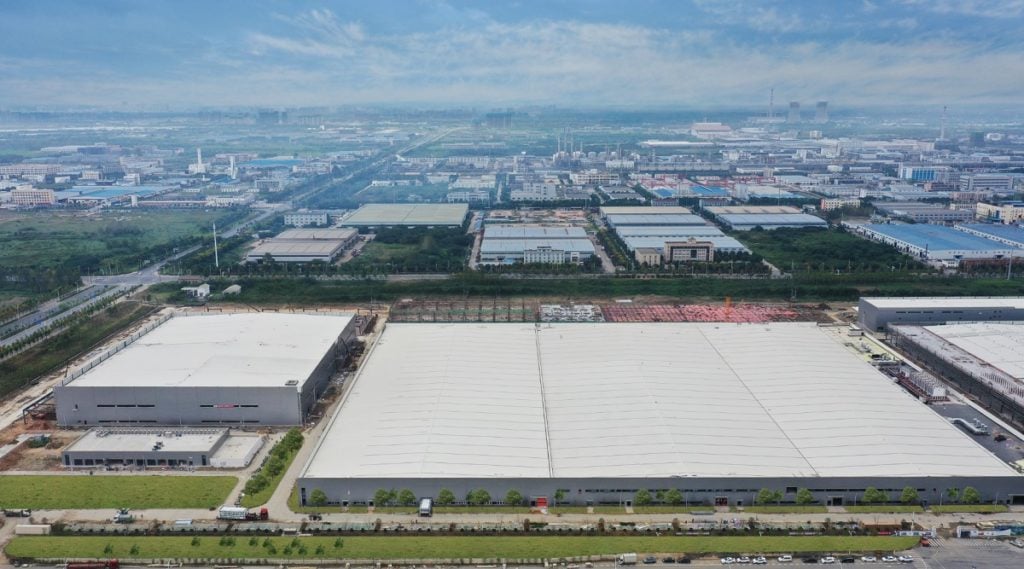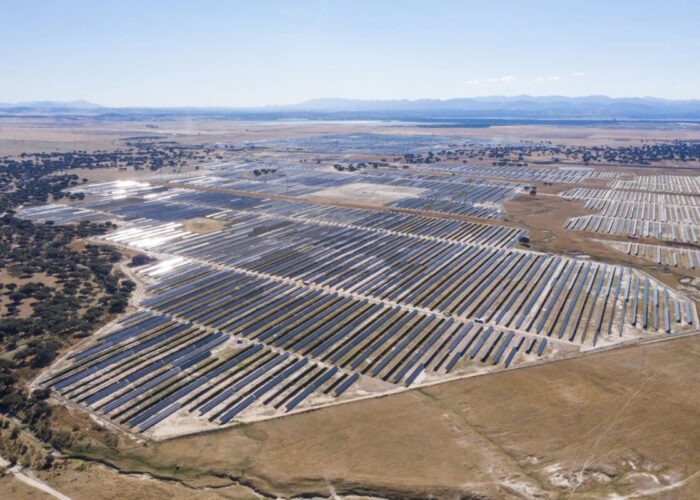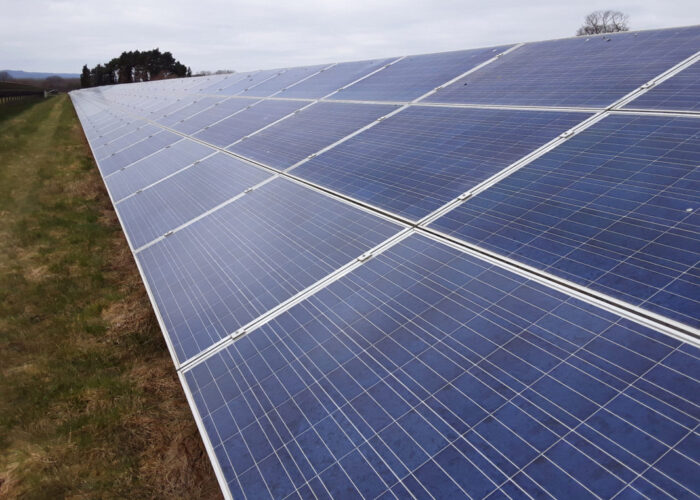
Last year will no doubt live long in the memory for the solar PV value chain, both in terms of supply chain volatility, fluctuating demand patterns and a technology race occurring in the background, shaping expansion plans.
Both GCL Poly and GCL System Integration have also had a year to remember, starting production at the first phase of a 60GW module Gigafactory in September while also looking to profit from an escalating polysilicon price.
Unlock unlimited access for 12 whole months of distinctive global analysis
Photovoltaics International is now included.
- Regular insight and analysis of the industry’s biggest developments
- In-depth interviews with the industry’s leading figures
- Unlimited digital access to the PV Tech Power journal catalogue
- Unlimited digital access to the Photovoltaics International journal catalogue
- Access to more than 1,000 technical papers
- Discounts on Solar Media’s portfolio of events, in-person and virtual
Philipp Matter, president, Europe at GCL System Integration, spoke to PV Tech about last year’s polysilicon price spikes, what to expect from the supply chain heading into 2022 and what GCL-SI’s strategy will be for catering for Europe’s surging demand and emergent new technologies.
PV Tech: Having witnessed pricing volatility last year, what is GCL’s take on the polysilicon situation and what are the prospects for it entering 2022?
Philipp Matter: In 2021 we saw the silicon price skyrocket up from RMB205 or RMB210 per kilogram, all the way up to 270, and the reasons for that lied in the supply of raw material, both silicon and metallurgical silicon, but also due to some factory closures due to electricity shortages. Now the supply of metallurgical silicon has improved a bit. It’s not completely where it has been or where it should be, but it definitely has improved. The interesting part is that we haven’t been seeing big inventories of polysilicon out there in Q4. It has been sold and people have bought it.
There were some year-end corrections in price. Nevertheless we see strong demand in H1 2022 from postponed projects that were planned for construction in 2021, as well as strong demand from nearly all markets in general. Additionally new silicon expansion is being ramped up slowly or even delayed a bit.
Going further into 2022, we believe that real capacity expansions versus the market growth will maybe hit a bit in the second half of this year, but not very strongly. We see potential for decreases in pricing from 2023 onwards.
Some industry stakeholders have expressed fears of another spike in pricing leading up to Chinese New Year as there might be some stockpiling that takes place. Do you see that happening at all?
We haven’t seen it yet, but of course everyone is really afraid of closures of factories. It is normal that there are price fluctuations around Chinese New Year and I guess it might happen again. But I don’t think it will have a sustainable or lasting effect that will endure until the end of Q1.
With these price increases reverberating across the value chain, what kind of impact is that having on demand?
In general, we have seen lots of impact on our operational business in the short term, particularly as some customers have decided not to build because prices are too high. That’s especially true in the large-scale project side, whereas with small-scale or residential projects, they continued because the increase was possible to digest.
But when we look at the mid- or long-term, we don’t see a big impact. It’s always a question of how did you run or enter your project financially and if you have enough time to prepare, you adapt a little bit and swallow higher prices by also selling electricity at higher prices, which is now possible. In many cases we have spoken to clients and we see that in the market, the management and purchasers of our partners and clients state that they don’t quite care where the prices are, as long as the project brings profit, and as long as they buy cheaper than then their competitors buy, right? So that’s something we have seen quite often.
While we’ve seen delays and postponements of projects, I haven’t seen any examples of cancellations. Of course, it’s been a headache and still is, but I would say it’s somehow manageable by the industry.
This instability is having an impact on capacity expansion plans amongst the upstream, is that also true of GCLSI and GCL Poly?
On the GCL Poly side, we are investing in silicon factories as we’ve seen that becoming more and more attractive again. We haven’t quite changed our expansion plans based on recent events. We’ve just added 20,000MT to our FBR silicon plant and we are going aggressively further in three locations with expanding FBR silicon; Sichuan, Inner Mongolia and Xuzhou. The benefit in FBR here lies mainly in lower consumption of electricity, which brings better carbon footprint and cost savings potential.
On the module side, a while ago we announced our 60GW factory, and the pricing dual controls in China was announced more or less in the same week that we opened the first line of the plant. There was no impact from the electricity supply side, but there was impact from the raw material side, just not on the factory itself. We are pressing ahead with the expansion plans, and these will be in four phases, each phase having 15GW. By the end of 2022 we will have 20GW of module capacity
And when it comes to servicing international markets, what’s GCL’s strategy behind catering for Europe?
In Europe, we are well established and we have good partnerships. We know how each of those markets run and work, and we have the ability to cater for those markets that require low carbon footprints. We believe that this will be an even bigger topic in the future – I think it’s pretty obvious that products produced with lower carbon footprint will bring an advantage. In some markets it’s even a requirement, and we’d expect that to become stricter, at least at the European Union level anyway. We also see companies liking and wanting to buy low carbon materials and solar modules. And that’s where we see a big advantage.
On the subject of catering for Europe, there were calls last year for a manufacturing renaissance in Europe. Is there any potential for that to feed into GCL’s plans?
To be frank, I don’t see the tangible growth in demand [for European-made modules]. Right? I see politicians and associations talking a lot about it, and of course, by those industry players that are still located in Europe. The demand comes from clients, and we haven’t been contacted by clients asking, ‘Hey, can you also provide European made products?’
Customers, what do they want? They want high quality at prices that make their investment viable, and if they can get that and also have locally made products? Of course, they would go for it. But in the end, it’s not really a big desire to have that if all their needs and wishes are already fulfilled. They would go for that which makes most economic sense.
Having said that, of course, we are screening possibilities and sometimes have discussions on doing something like that. Nevertheless, it’s nothing concrete.
Shifting away from the actual manufacturer, there’s a number of technologies which are coming down the chain at the moment, and most major manufacturers have TOPCon products coming out if not already, then certainly early 2022. What your view on whether the next leader is TOPCon or heterojunction?
That’s a good question, but unfortunately, I don’t think I or we have an answer to that right now. We are starting with TOPCon this year, that’s already announced, we have plans to build a 10GW TOPCon cell production base in Sichuan, and we are still investigating HJT. So far, there are very good arguments for TOPCon and for HJT.
You also have to consider that a lot of companies have just recent invested heavily in mono PERC lines, which can be converted only to TOPCon, so many that go into TOPCon will do so to cover their decision to invest in mono PERC just a few quarters ago. Then there are also some TOPCon lines with a lot of investment or sunk investment costs already, and they might be able to produce into the market quite cheaply versus HJT lines.
On top of that, we see some really promising developments in perovskite advancement. This might come earlier than expected, maybe even between 2023 and 2024.
Do you think the turbulence in supply chain pricing and the strain manufacturers have experienced last year could delay that switch to TOPCon or heterojunction?
No, I don’t think so. I think that’s pretty decoupled. While you need higher purity silicon for those types of wafers, which is in turn priced a little bit higher, I think that’s relatively minor so you won’t see delays because of that. It’s pretty obvious the industry already sees these two as the clear next technologies to come up.
We’ve recently seen TZS launch a wafer even larger than the M12 210mm size, is there potential for cells, wafers and modules to go much larger than what we’ve seen today?
With modules now being something like 3.1 square metres for the utility-scale market, I think we’ve reached a limit. I don’t see modules becoming much bigger than that, especially since there are no optimised solutions for installations. But we are looking into the new 218.2mm wafers and our new factory is prepared for that. The Hefei facility is compatible with wafers up to 230mm. If these are introduced, the slight area increase could equate to a power increase up to 4-5% in comparison with 210mm modules. At the same time, the new vertical packaging technology makes full use of the container space to reduce logistics costs.







